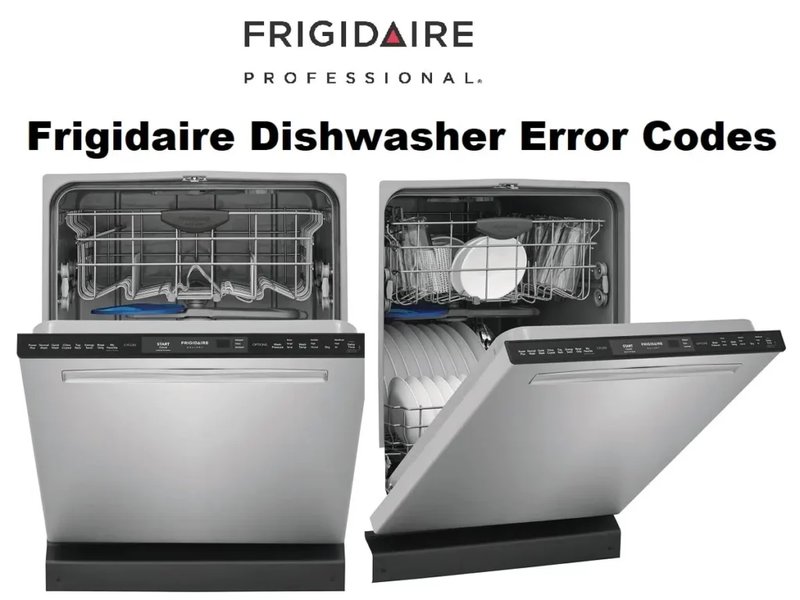
The “OE” error code on a Frigidaire dishwasher’s display is essentially its way of telling you there’s something amiss with its operation, specifically related to the draining of water. Think of it as the dishwasher’s cry for help, similar to how your car’s check engine light indicates a need for attention under the hood. This code is your dishwasher’s language for saying, “Hey, I can’t drain the water properly!” Understanding why this happens and how to fix it can transform a frustrating situation into a solvable problem.
Understanding the “OE” Error Code
To make sense of what the “OE” error signifies, it’s essential to understand some basics of how dishwashers work. A dishwasher is like a miniaturized car wash for your dishes. After the wash and rinse cycles, the machine needs to efficiently drain out all the dirty water. When the dishwasher flashes “OE,” it means there’s likely an issue in this draining process.
Typically, the drainage problem can be likened to a bathtub that won’t empty properly. Imagine trying to unclog a drain filled with hair and soap scum. Similarly, in a dishwasher, leftover food particles, grease, or even small pieces of broken dishes can create blockages that impede water from flowing out. This blockage leads the machine to panic a little and shoot you the “OE” code as a warning. Fortunately, once you understand the code, troubleshooting it becomes a manageable task.
So, what next? Addressing the problem isn’t as daunting as it seems. You’ll want to start with the obvious: check for any visible obstructions in the bottom of the dishwasher, where the water drains out. Sometimes it’s a simple fix, like removing a piece of errant debris. If it seems clear but the error persists, don’t worry. We’ll move on to slightly more involved steps, which are still DIY-friendly.
Common Causes and Solutions
There are a few common culprits that can lead to the “OE” error popping up. First, let’s look at the drain hose. Imagine your dishwasher’s drain hose as a straw through which all the wastewater needs to pass from the machine to your home’s plumbing. If this hose gets kinked, bent, or clogged, it’s as if someone pinches the straw, disrupting the flow. A simple visual inspection or gentle rearranging of the hose might do the trick.
Next up is the garbage disposal connection. If your dishwasher is connected to a garbage disposal, ensure that it’s not causing the blockage. Sometimes, after a new disposal installation, a plug inside the disposal’s dishwasher inlet needs removal. Forgetting this step is like trying to drink with a cap on your bottle. Simply removing the plug can rectify the drainage issue and clear the error code.
Finally, there might be an issue with the dishwasher’s pump or filter. Over time, the pump can wear out, or the filter might get clogged with pesky food remnants. Regularly cleaning the filter and ensuring the pump is functioning as needed can prevent future errors. This preventive maintenance is akin to regularly changing the oil in your car—essential to keeping things running smoothly.
Preventive Tips to Avoid Future Issues
Now, you might wonder how to keep this pesky error at bay in the future. No one wants to revisit this problem every few weeks. Here are a couple of simple habits that can make all the difference. First, scrape off excess food from your dishes before loading them into the dishwasher. It’s like shaking off the dirt from your shoes before entering the house—it keeps things cleaner in the long run.
Also, get into the routine of running your dishwasher’s self-cleaning cycle. Think of this as giving your machine a nice spa day. This cycle helps break down any accumulated deposits and keeps the internal components in tip-top shape. Additionally, check and clean the filters regularly, perhaps every month, depending on your dishwasher use frequency, to prevent build-up that can eventually lead to blockages.
When all else fails, having a professional to call upon ensures you’re not left in the lurch. Understanding your dishwasher’s needs and quirks makes life much easier, and tends to save you both time and money. Remember, the “OE” error is just a little nudge from your dishwasher, asking for a bit of attention. With these insights and actions, you’ll be back to running smooth and efficient dishwashing cycles in no time.